Northwest Atlantic Ocean (40W)
Type of resources
Available actions
Topics
Keywords
Contact for the resource
Provided by
Years
Formats
Representation types
Update frequencies
status
-

Effective conservation planning relies on understanding population connectivity which can be informed by genomic data. This is particularly important for sessile species like the horse mussel (Modiolus modiolus), a key habitat-forming species and conservation priority in Atlantic Canada), yet little genomic information is available to describe horse mussel connectivity patterns. We used more than 8000 restriction-site associated DNA sequencing-derived single nucleotide polymorphisms and a panel of 8 microsatellites to examine genomic connectivity among horse mussel populations in the Bay of Fundy, along the Scotian Shelf, and in the broader northwestern Atlantic extending to Newfoundland. Despite phenotypic differences between sampling locations, we found an overall lack of genetic diversity and population structure in horse mussels in the Northwest Atlantic Ocean. All sampled locations had low heterozygosity, very low FST, elevated inbreeding coefficients, and deviated from Hardy-Weinberg Equilibrium, highlighting generally low genetic diversity across all metrics. Principal components analysis, Admixture analysis, pairwise FST calculations, and analysis of outlier loci (potentially under selection) all showed no independent genomic clusters within the data, and an analysis of molecular variance showed that less than 1% of the variation within the SNP dataset was found between sampling locations. Our results suggest that connectivity is high among horse mussel populations in the Northwest Atlantic, and coupled with large effective population sizes, this has resulted in minimal genomic divergence across the region. These results can inform conservation design considerations in the Bay of Fundy and support further integration into the broader regional conservation network. Cite this data as: Van Wyngaarden, Mallory et al. (2024). Widespread genetic similarity between Northwest Atlantic populations of the horse mussel, Modiolus modiolus. Published: May 2025. Coastal Ecosystem Science Division, Maritimes Region, Fisheries and Oceans Canada, Dartmouth, NS.
-
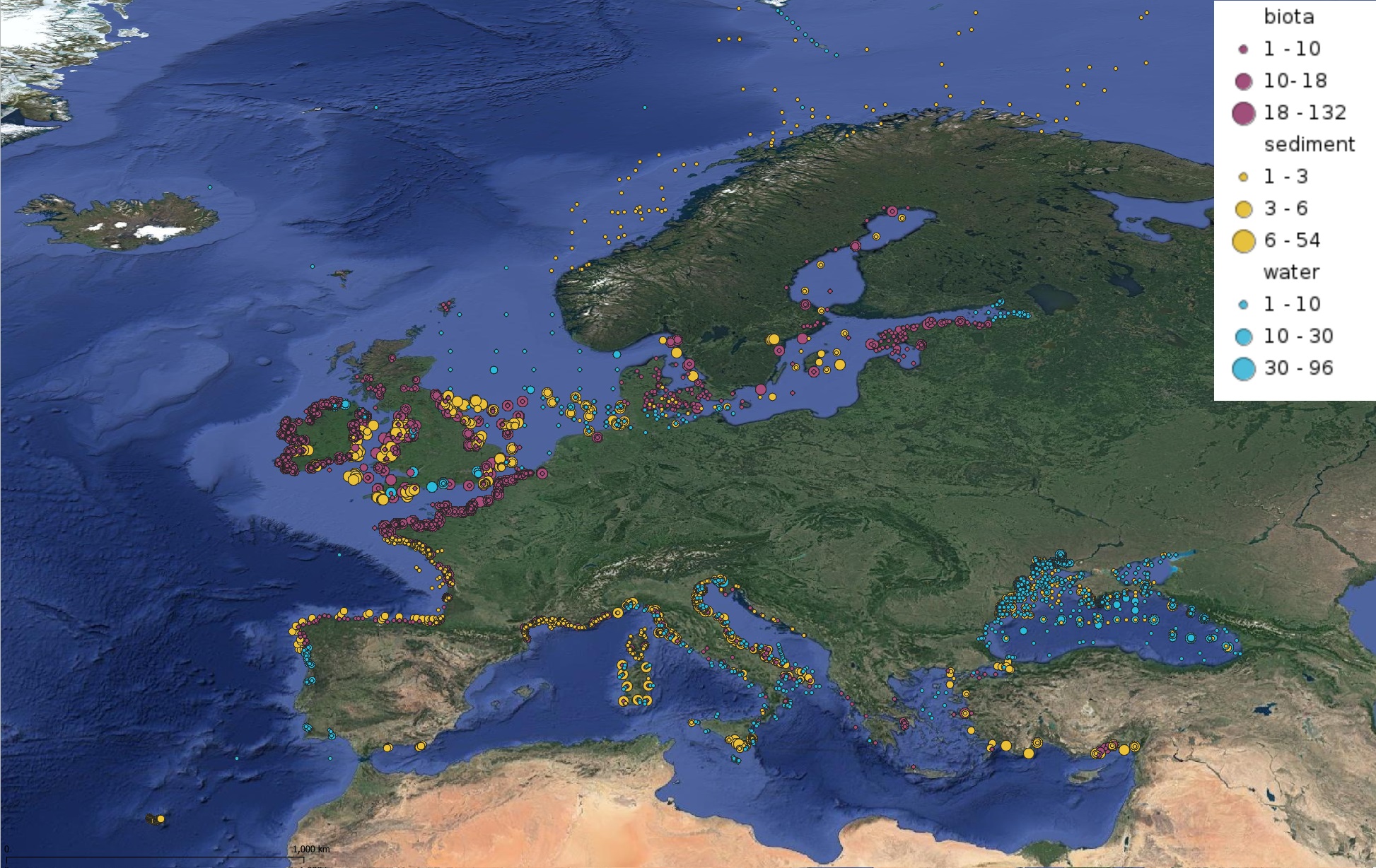
This product displays for DDT, DDE, and DDD, positions with values counts that have been measured per matrix and are present in EMODnet regional contaminants aggregated datasets, v2022. The product displays positions for all available years.
-
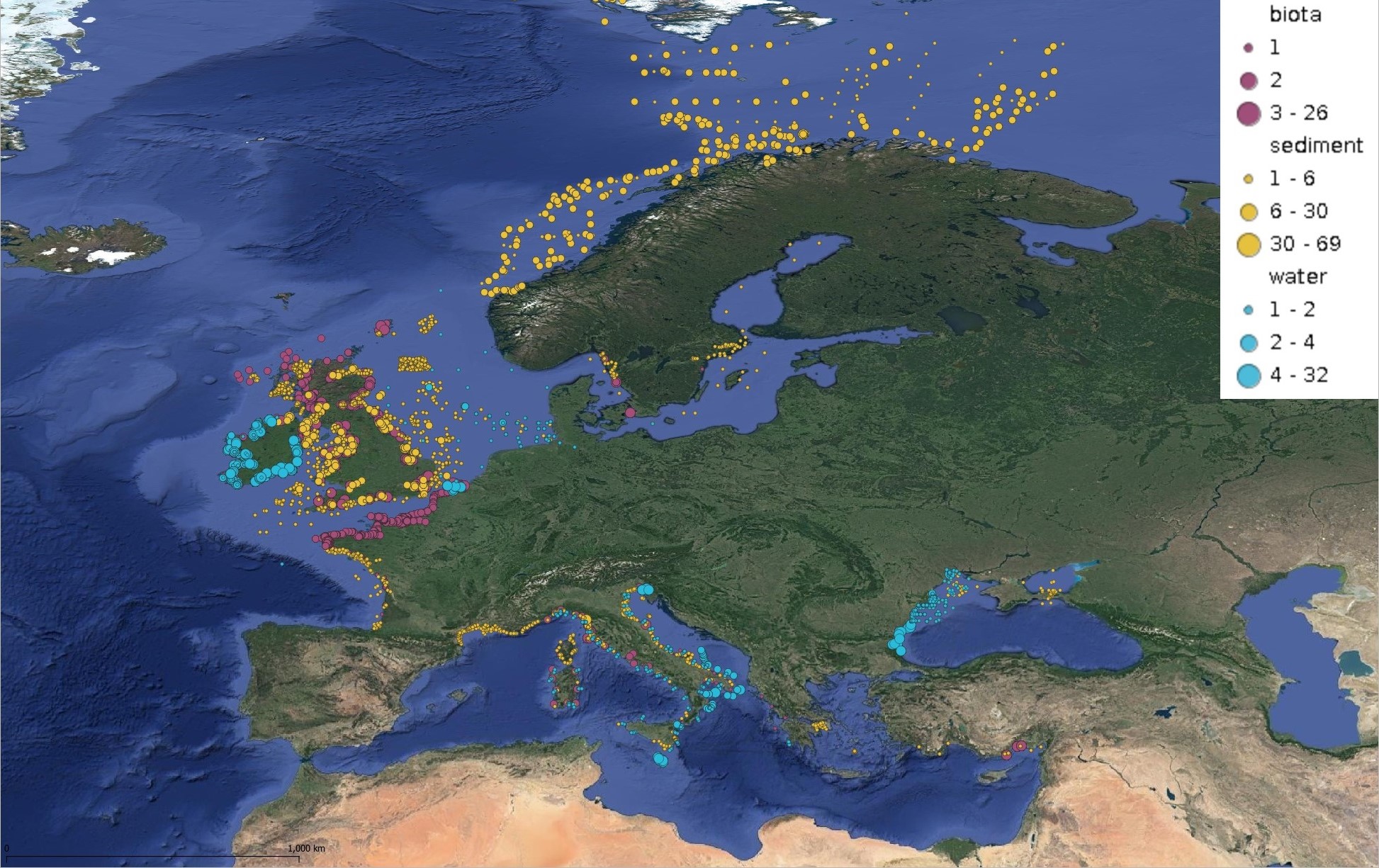
This product displays for Naphthalene, positions with values counts that have been measured per matrix for each year and are present in EMODnet regional contaminants aggregated datasets, v2022. The product displays positions for every available year.
-
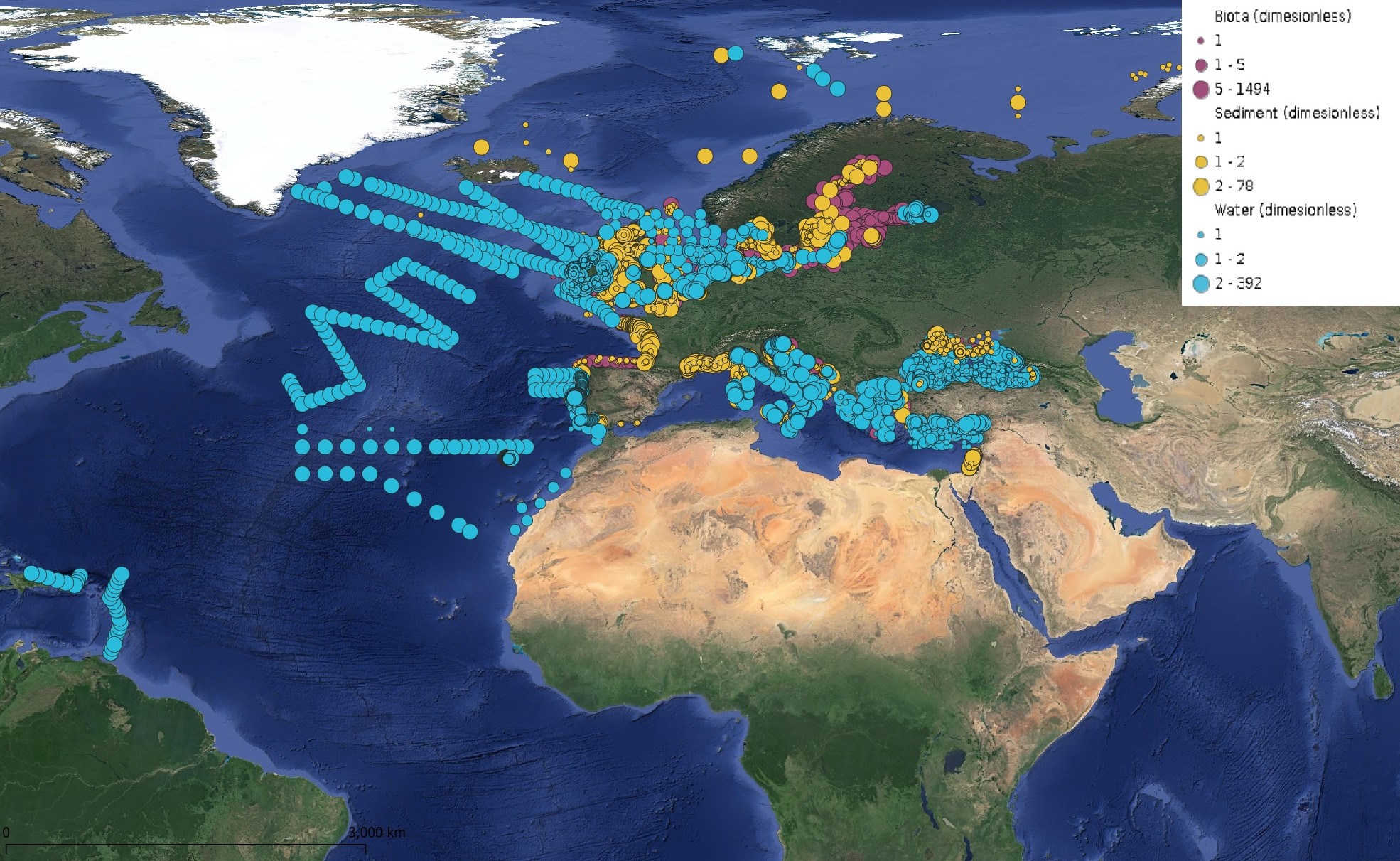
This product displays for Mercury, positions with values counts that have been measured per matrix and are present in EMODnet regional contaminants aggregated datasets, v2024. The product displays positions for all available years.
-
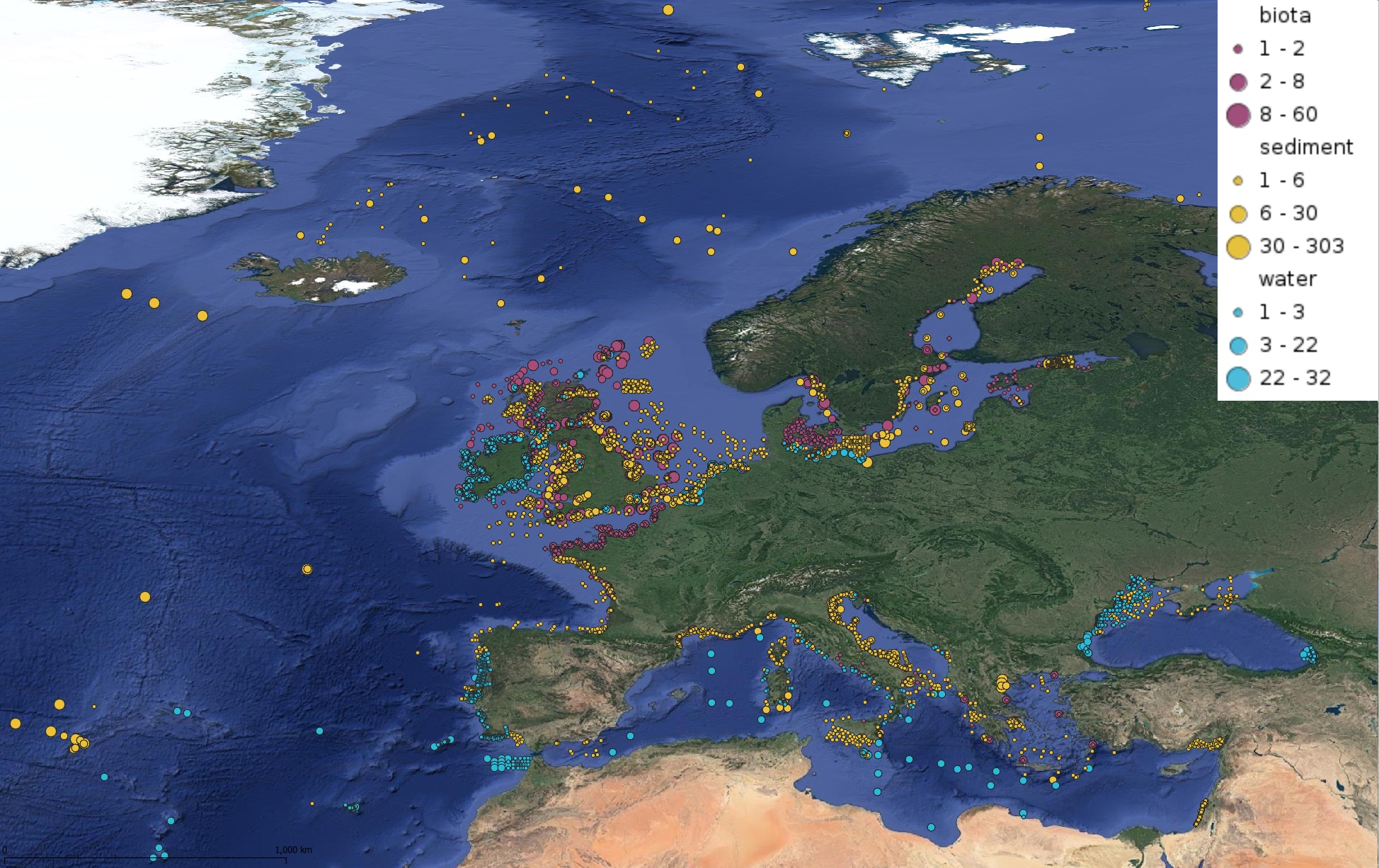
This product displays for Nickel, positions with values counts that have been measured per matrix and are present in EMODnet regional contaminants aggregated datasets, v2022. The product displays positions for all available years.
-
pyrene_counts_2024.jpg)
This product displays for Benzo(a)pyrene, positions with values counts that have been measured per matrix and are present in EMODnet regional contaminants aggregated datasets, v2024. The product displays positions for all available years.
-
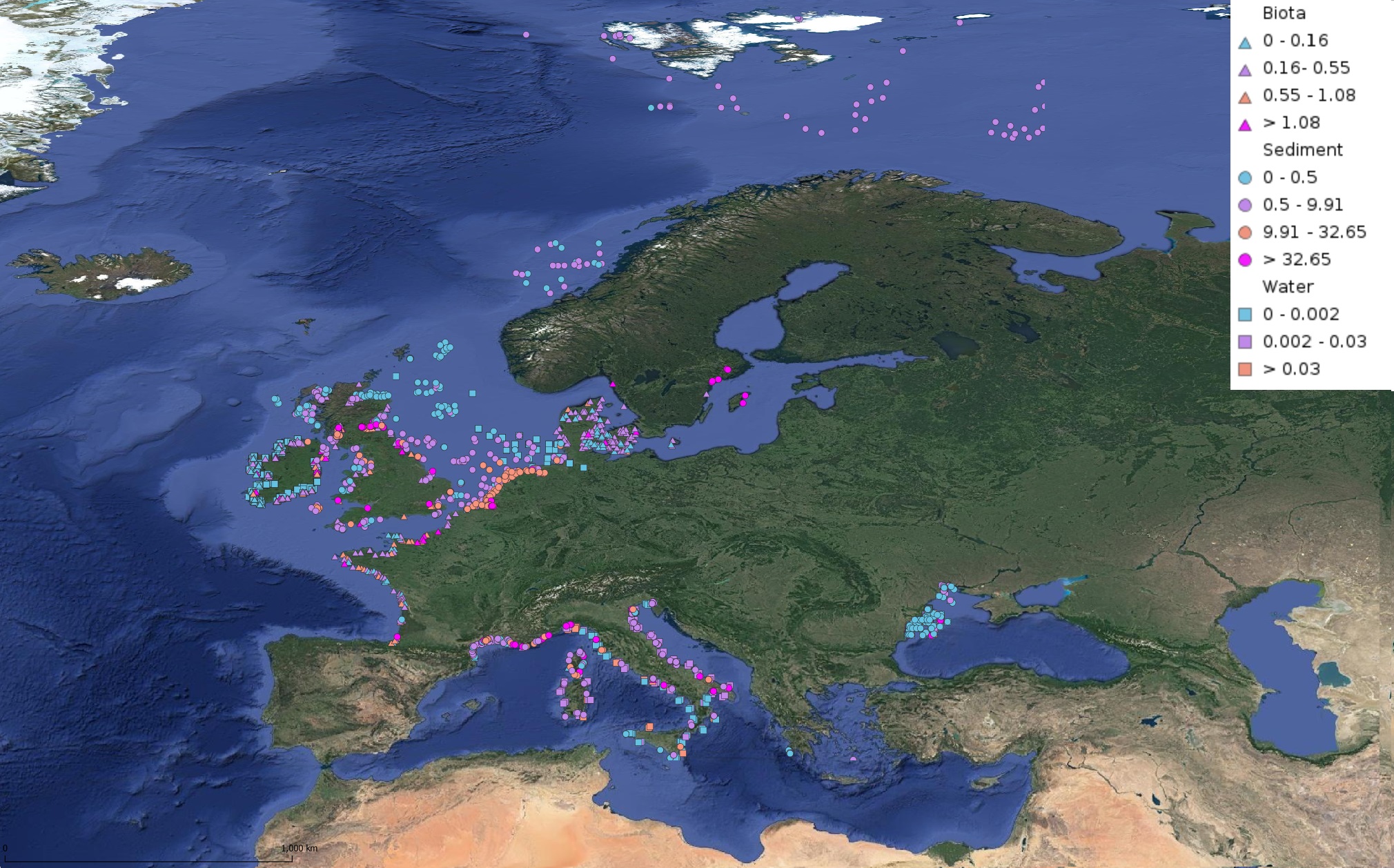
This product displays for Anthracene, median values of the last 6 available years that have been measured per matrix and are present in EMODnet regional contaminants aggregated datasets, v2022. The median values ranges are derived from the following percentiles: 0-25%, 25-75%, 75-90%, >90%. Only "good data" are used, namely data with Quality Flag=1, 2, 6, Q (SeaDataNet Quality Flag schema). For water, only surface values are used (0-15 m), for sediment and biota data at all depths are used.
-
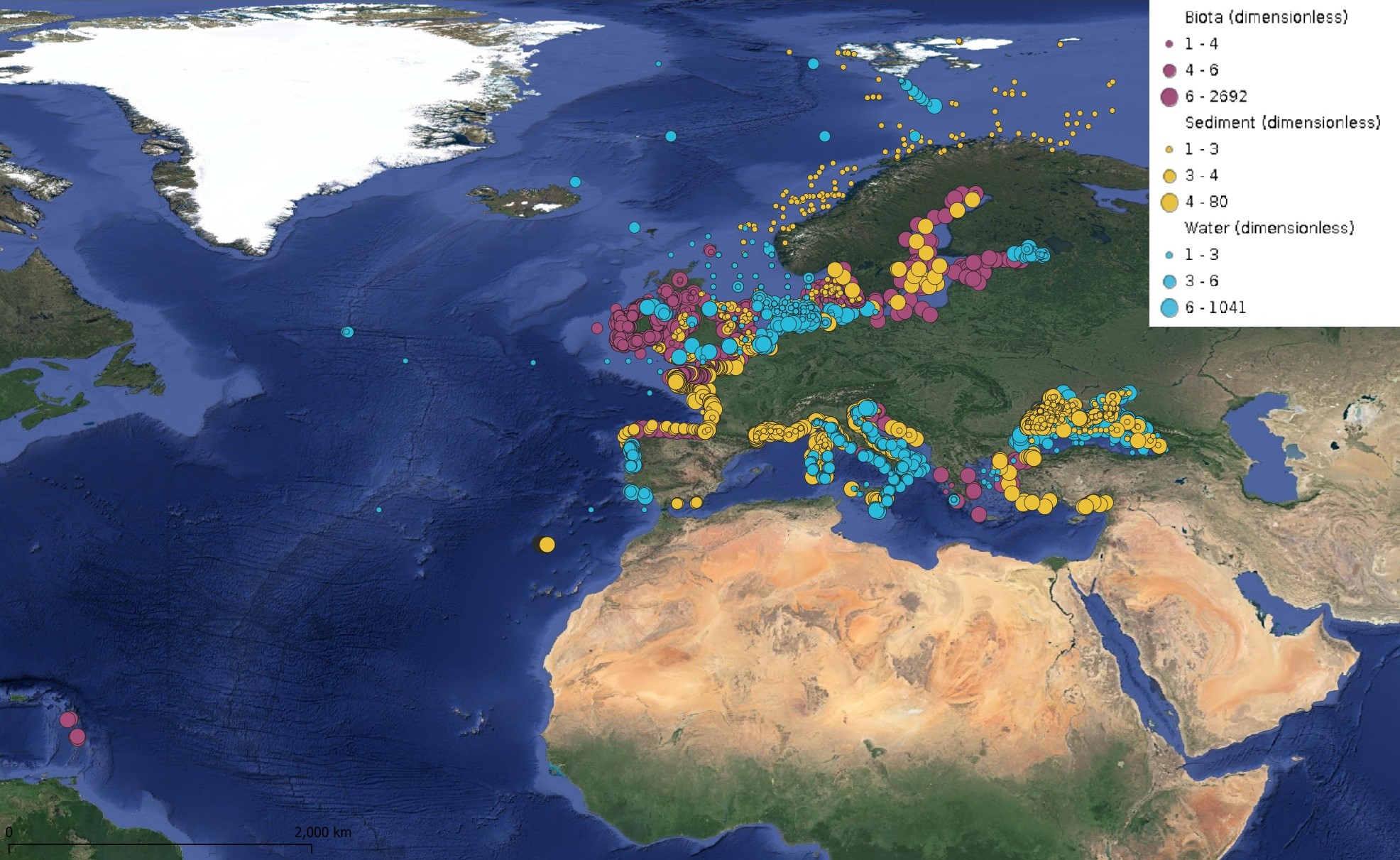
This product displays for DDT, DDE, and DDD, positions with values counts that have been measured per matrix for each year and are present in EMODnet regional contaminants aggregated datasets, v2024. The product displays positions for every available year.
-

This product displays for Anthracene, positions with values counts that have been measured per matrix for each year and are present in EMODnet regional contaminants aggregated datasets, v2024. The product displays positions for every available year.
-
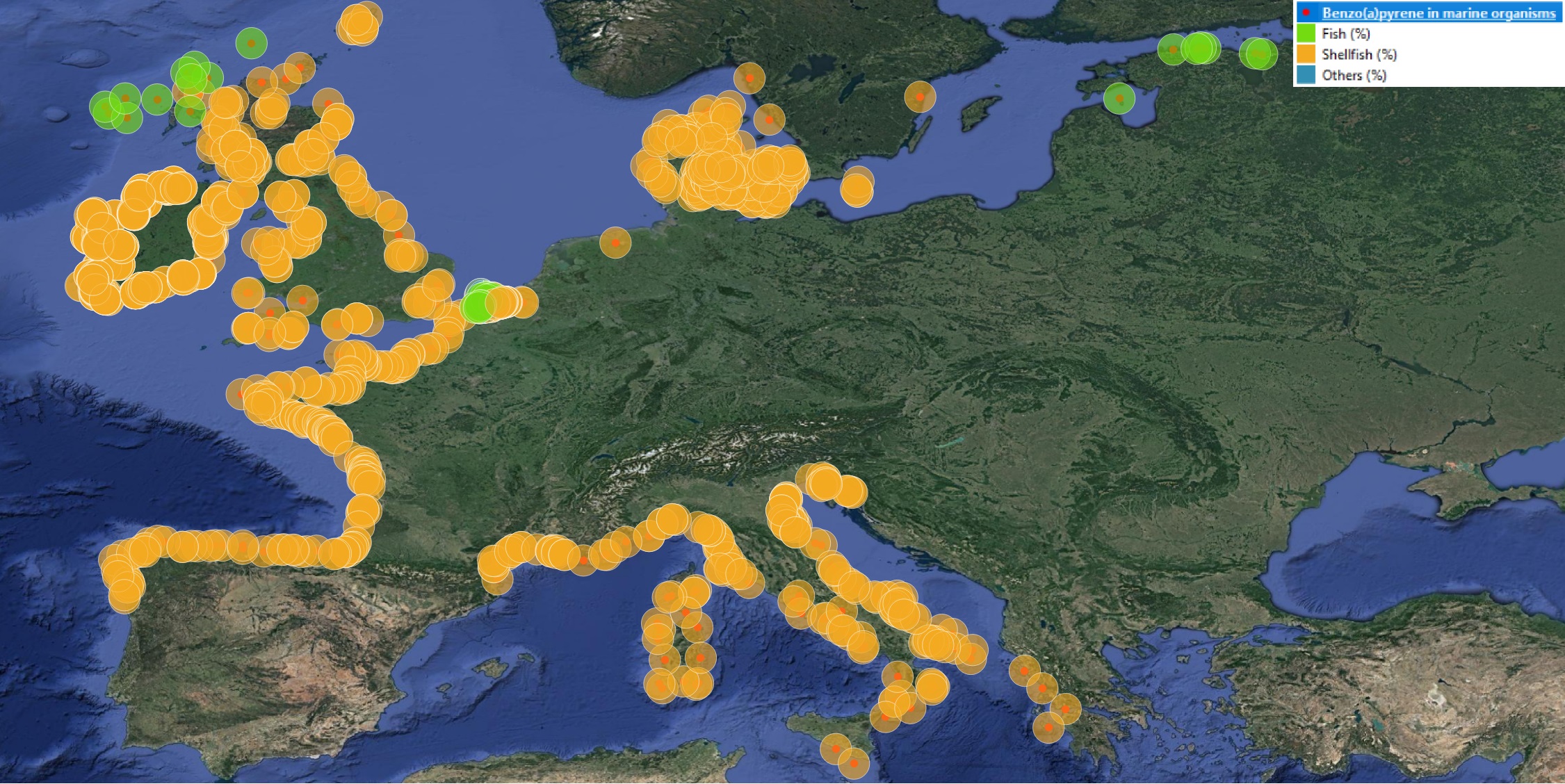
This product displays for Benzo(a)pyrene, positions with percentages of all available data values per group of animals that are present in EMODnet regional contaminants aggregated datasets, v2022. The product displays positions for all available years.
 Arctic SDI catalogue
Arctic SDI catalogue